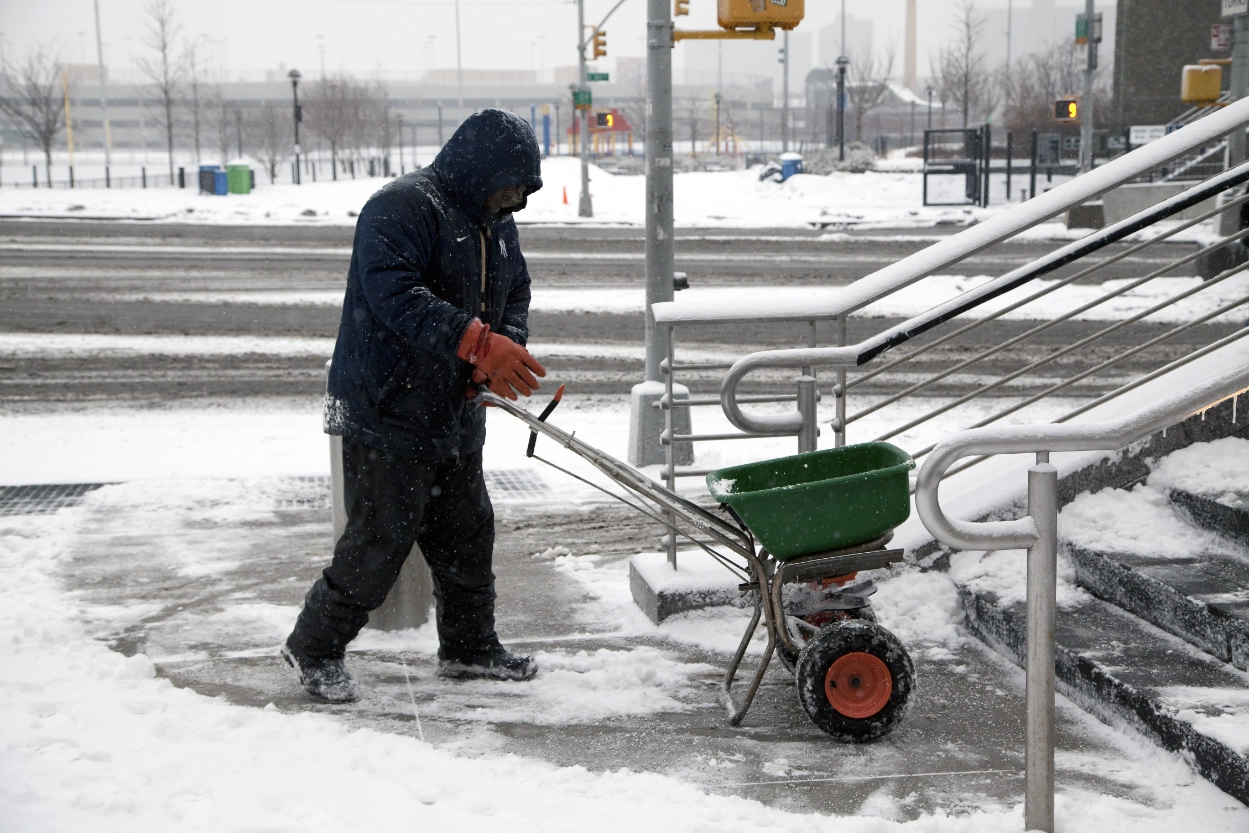February 2024

As the snow falls and ice starts to form, implementing effective winter maintenance measures becomes paramount to prevent accidents and injuries. Salt plays a crucial role in keeping our surfaces safe during the colder months, but we must be mindful of how much we put down. Over application does not increase effectiveness.
For property owners, prioritizing the safety of individuals entering their premises is their responsibility. To keep surfaces safe, it is crucial to keep commonly travelled areas free of snow and ice to prevent accidents. This includes sidewalks, driveways, and entryways. Neglecting to remove snow and ice could result in serious injuries from slips and falls. Clearing these areas promptly and keeping them clean throughout the winter is imperative.
While rock salt has been the go-to solution for melting snow and ice, it is worth considering alternative de-icing and anti-icing solutions that provide more efficient and effective results. For property owners, packaged ice melters act as a superior alternative. Ice melters typically consist of a blend of components, including sodium chloride, calcium chloride, magnesium chloride, and organic enhancers. The mix of components works together to melt snow and ice at lower temperatures and provide faster melting and longer-lasting results than traditional rock salt.
One significant advantage of ice melters is achieving desired melting results with less product. The recommended application guideline for some packaged ice melters suggests using only 1/4 to 1/3 cup per square yard, a substantial reduction compared to the traditional rock salt's recommendation of 1 cup per square yard. This reduction leads to cost savings and reduces environmental impact.
Amongst municipalities, a liquid-coated treated salt is a favoured de-icing solution. A treated salt is coated with a premium liquid de-icer like magnesium hloride, calcium chloride, and organic-based performance enhancers. For enhanced visibility, a colourant can be added to ensure correct application and identify safe pathways to travel for pedestrians and drivers.

When coated with an OBPE de-icing liquid, treated salt provides corrosion resistance that protects vehicles, landscaping, infrastructure, and equipment from corrosive damage, resulting in substantial savings from potentially expensive repairs. In addition to its cost-saving benefits in commercial snow and ice management, treated salt is particularly advantageous due to its immediate melting effectiveness at lower temperatures than rock salt, making surfaces safe quicker.
In addition to using a packaged ice melter for winter maintenance, individuals can reduce their salt usage at home by following five tips:
While winter maintenance is essential for safety, it is equally important to do so responsibly. Using a packaged ice melter or treated salt will reduce your salt and allow you to achieve better results. It is a win-win situation! To learn more about ice melters and treated salt, visit Innovative Surface Solutions' website at https://www.innovativecompany.com/solutions.php
May 2024
April 2024
February 2024